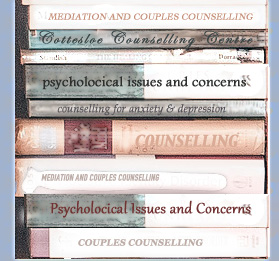The couple is surely one of the archetypal patterns of human relationships. All human societies appear to have long term adult pair-bonding of one kind or another. Yet the maintenance of a healthy couple bond over time is perhaps one of the most difficult and challenging tasks of our adult lives.
The life cycle of the couple involves many changes. It begins, of course, with the “honeymoon phase”, in which we are madly in love with our partner and everything is exciting and wonderful. This can be notoriously short-lived. It may be based on suppositions about who the other person is, which can turn out not to be true. The next phase may involve some disillusionment, as it involves facing some harsh realities. Many couples break up at this point. A couple which continues beyond this point may have financial commitments and young children, which can involve both hard work and tedium. At this point the couple may feel like a pair of administrators managing a joint venture rather than a romantic couple. The pressures of raising a family, and earning enough money to support it, can be overwhelming. When children have left home, and the nest is empty, one may find that one no longer has anything in common with one’s partner, and one is living with a stranger.
The above scenario is, although pessimistic, very common. Avoiding these pitfalls involves investing time and effort into maintaining the health of the relationship. A healthy relationship might be said to be one in which there is freedom and support for each individual to pursue their personal goals, as well as nurturing and promoting the mutual goals which the two partners share. Such a relationship could function and even thrive without intimacy, and many do.
Intimacy is an extra dimension beyond these factors, it is that magical “something” which gives excitement and depth to the relationship. Emotional intimacy is difficult to achieve unless the two people interacting with each other are relatively sure of who they are and have a fairly clearly defined sense of their own identity. One of the most difficult challenges is to maintain a strong sense of one’s own self whilst remaining in contact with the other person. There are two popular ways of avoiding this challenge.
One is to blur with or merge into the other person. This can happen in subtle ways like being accommodating. Often it is easier to go along with the other person’s wishes, in order to avoid conflict or making a fuss. If you step back from disclosing what you really want, or who you really are, then you have adopted a role which is a false self. If this becomes a repeating pattern, it gets boring and depressing. The relationship becomes rigid because there is no room to move beyond the false identities. Eventually one can find oneself being slowly eroded away until one begins to lose a sense of oneself.
The feeling of merging with another person can be appealing at certain times. If you are in a state of anxiety, it can feel very safe and reassuring to dive into another person. The emotional “fusion” can reduce anxiety and restore a sense of identity and purpose. It can of course also foster dependency on the other person.
On the other hand, fusion can be an experience of ecstatic union – during sexual intercourse or moments of extreme tenderness there can be a feeling of melting deliciously into the other person. This is a healthy and desirable thing, as long as it is temporary, and one is able to freely move back to being a separate identity.
An alternative way of avoiding contact is to move away and disengage from the other person, so that one’s individuality is maintained clearly but the price one pays is that there is a gulf between the two people. This may be driven by a phobia of closeness, such that it feels too threatening to get too close to the other. Or it may be simply due to an inability to connect with others or to feel very much on an emotional level. There are many sectors of modern Western society – e.g. in the business world – which encourage the development of personalities which are like this. The successful business executive is often seen as strategic and ruthless – the smiling assassin who coolly engineers the corporate takeover. He may be extremely charming socially, but utterly incapable of having an intimate relationship with his wife.
The above scenarios are some variations on how to avoid contact, which exclude the possibility of intimacy. Intimacy can only begin to happen if both people are present as their true selves, and remain in contact. Contact is the dance of exchanging feelings and thoughts in an ongoing flow – honestly and without trying to control the outcome. This is difficult, scary, and exciting. Couples therapy aims to help this process along.
Intimacy is a particular kind of knowing of the other person which is pursued for its own sake, not for the satisfaction of any particular goal. This is opposed to a strategic kind of relationship, where the outcome is of primary importance, and the actual relating is secondary. Examples of strategic relating might be coaxing, flattering, appeasing or bullying in order to get what you want. The desired outcomes might be to gain a financial advantage, to have sex, to feel important, to get a new car, to get custody of the children, and so on. This kind of relating poisons intimacy. However, if one lets go of trying to control outcomes, and simply is oneself with the other person, real contact will occur. This is where the magic happens.

